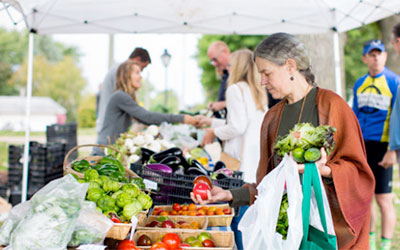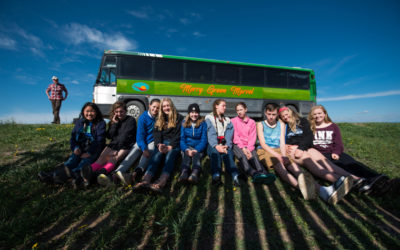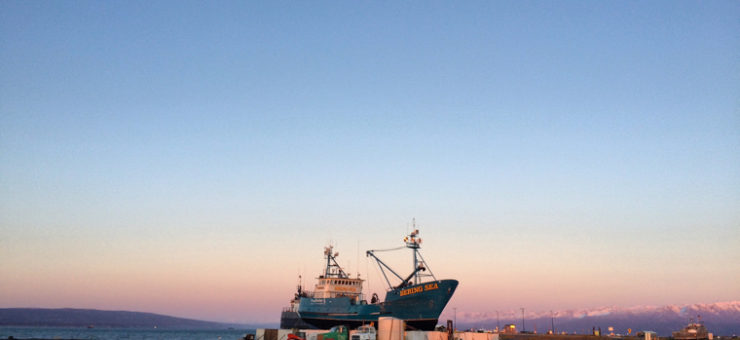It was just supposed to be an ordinary vacation—a brief escape from a job and a drive with a friend. But an unplanned detour that landed me in Mineral Point, Wisconsin, proved to be a life-changing event. I had lived in small towns most of my life, visited many more, and had studied rural communities as a student. But something felt different here. It was as though I already knew that I belonged here in this town.
Perhaps it was the hills of the Driftless Region of southwest Wisconsin. The natural beauty was undeniable, and I felt a gentle hug from the surrounding landscape. Maybe it was the old stone architecture lined up for several downtown blocks—much more than I expected for a town of 2,500. It was obvious from the first moments here that this was a community that valued preservation. In another time of my life, I had lived in a community that seemed sadly bent on tearing down all traces of its history. Here, it seemed, was the mother lode of historic architecture. Could it be that these were my people?
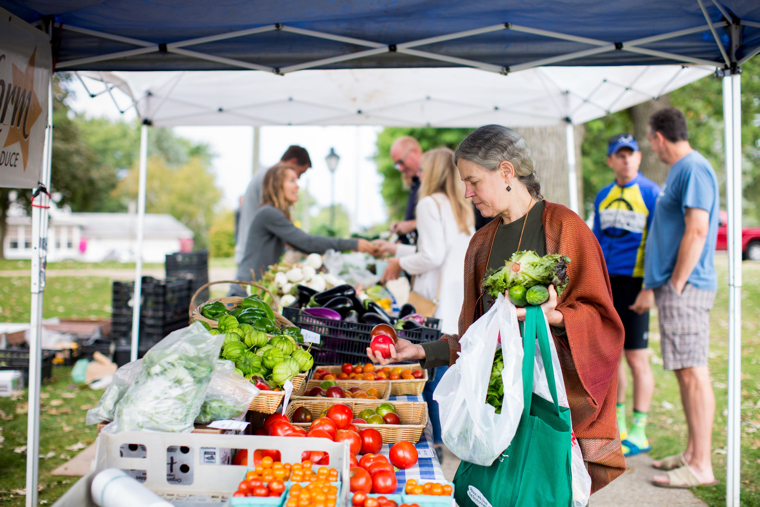
Mineral Point Farmer’s Market (photo credit: SV Heart Photography)
It was just a short stay that day, but it was long enough to give me a sense of place stronger than any I had ever experienced. As my friend and I traveled on to our intended destination, I knew this was a place I would not likely forget. I casually remarked that I wanted to live in this town—if only a job would open up.
The Internet allowed me to continue visiting Mineral Point from a distance. I learned about its long history as one of the oldest towns in Wisconsin, where hardscrabble miners looking to get rich and living in crude dugouts were responsible for Wisconsin’s nickname, the Badger State. Not knowing much of anything about Cornwall before, I learned how immigrants from there started arriving in the 1830s and built many of those buildings I had just fallen in love with. The Internet also introduced me to some of the artists who were such a big part of the community.
As luck (or fate) would have it, only eight months later, I discovered the online notice about the very job I had mentioned as a possibility for me–and I got the job! For the first time in my life, there was no hesitation. I packed up and moved home to a place I had never heard of less than a year before.
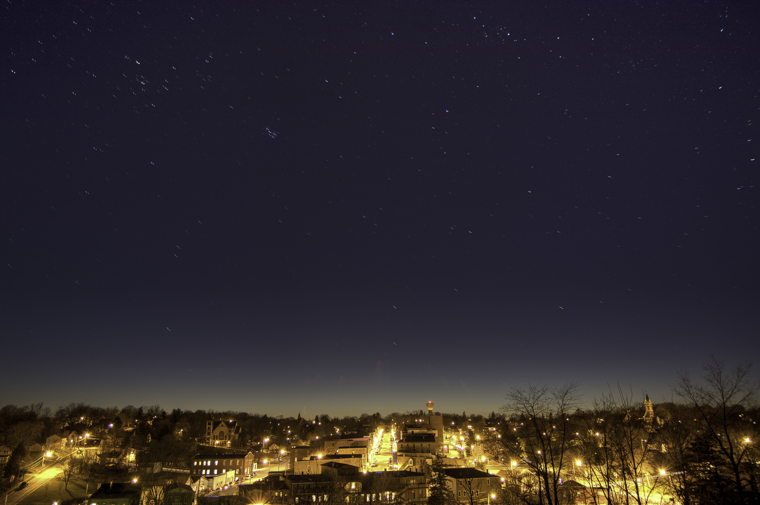
Magic Lighting (photo thanks to Mineral Point Chamber of Commerce)
It turns out that my story is far from unique. There have been many people before me, and will be many more after, who have come into this town and found ways to make it their home. And those lucky enough to have been born here are equally in love with this place.
Any talk of this love for Mineral Point and commitment to preservation has to mention two men whose dedication to this community began in the 1930s. Robert Neal, who had grown up in Mineral Point, was working as a decorator in London. On a return trip home he met Edgar Hellum, who was in town collecting salvage materials from the many buildings being torn down. Long before “historic preservation” became popular, and with the whole country in the midst of the Great Depression, Bob and Edgar took on the project of saving a rock cottage. They persevered through financial hardship and endured the laughter of townspeople who thought it folly that anyone would work so hard just to save an old house. But the tide eventually turned, people laughed less, and other workers in the community joined the project down on Shake Rag Street.
Bob and Edgar called their first house Pendarvis, following the Cornish custom of naming homes. Before long, in order to make some money, they opened a very small restaurant serving pasties (meat pies) on a call-ahead-only basis. With no advertising, but some very fortunate press, their little dining experience attracted people from every state and many foreign countries. It was listed in top magazines—the smallest restaurant in the States, and run by two guys!
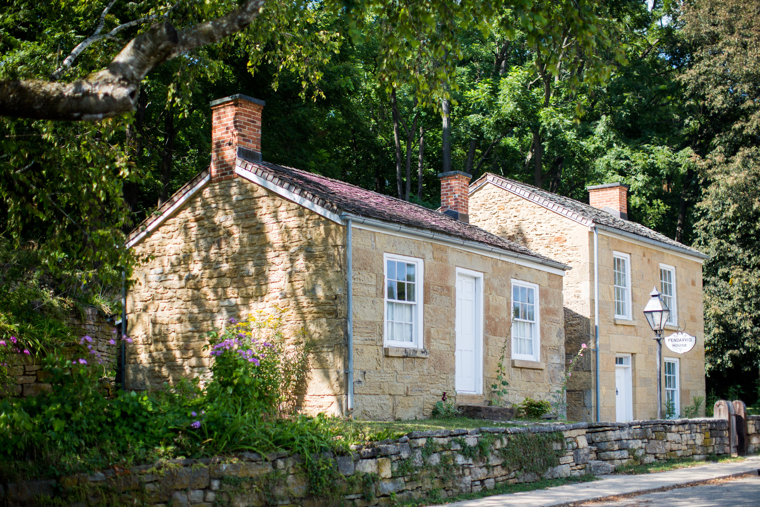
Pendarvis (photo credit: SV Heart Photography)
The restaurant is gone now, as are Bob and Edgar, but the legacy they helped build lives on at the Pendarvis historic site, and preservation has become a cornerstone of Mineral Point. In 1971, with over 500 contributing structures, it became the first Wisconsin town to be listed on the National Register of Historic Places. In 2007, the National Trust for Historic Preservation named it one of their “Dozen Distinctive Destinations.”
When people first come upon High Street, many experience an “a-ha” moment, one that evokes a sense of something special, even magical. It hasn’t always been so; the town has had its ups and downs and times when it wasn’t all that pretty. But through it all, there have people willing to take a chance on saving buildings and bringing them back to their original beauty—people like Bruce Howdle, who, in addition to taking on an eyesore of a building and making it shine, is always willing to offer help to others in their restoration projects. He and so many like him seem to understand the soul of these old buildings and have painstakingly brought them back to life.
In addition to many private restorations, the community is filled with stories of dedicated individuals working tirelessly to save public buildings. The oldest existing railroad depot in Wisconsin was a decrepit stone structure when I first saw it. A group of people unwilling to give up on it raised the money needed to restore it. After what could be called a building resurrection, it now houses artifacts from the early railroading and mining days of Mineral Point. Similarly, the Opera House, dedicated in 1915 as “A Theatre for All the People,” had grown tired and ragged after a century of use and faced imminent closure because of fire safety issues. But the community pulled together and now has a beautiful venue for performing arts and films.
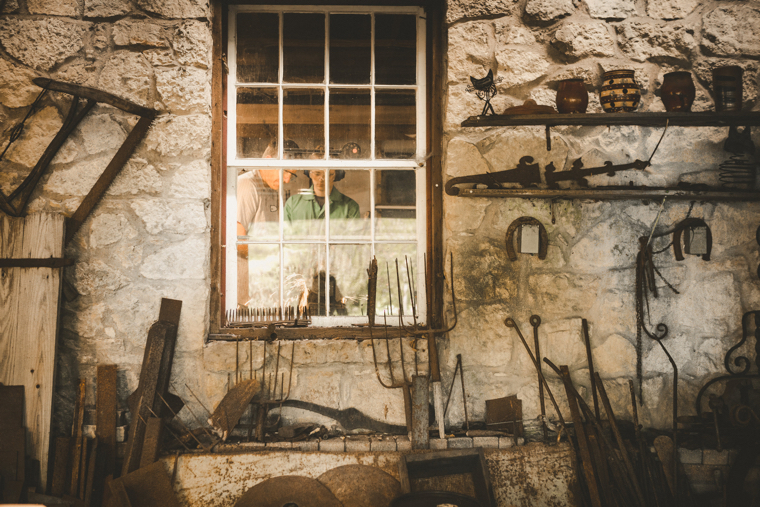
(photo credit: SV Heart Photography)
Long before these more recent restorations, the Mineral Point Historical Society was formed in 1939, when a group of 11 residents banded together to save a stately home from the wrecking ball. Today, in addition to house tours, Orchard Lawn (formerly the Gundry house) hosts concerts, provides a beautiful backdrop for weddings, and stands as another example of what a group of dedicated people can do together. As Edgar Hellum said—quoted in On the Shake Rag, a 1990 book published by the Wisconsin Historical Society—“There isn’t anything you can’t do, if you want to do it. You have to want to do it badly enough.” People in Mineral Point strongly want to preserve the historic architecture that defines us.
Historic preservation often goes hand in hand with attracting artists, something that has been happening for decades in Mineral Point. A 1970s Wisconsin Trails publication stated that Mineral Point had become “tolerant of artistic temperament and lifestyles.” We owe a debt of gratitude to those early pioneering artists who, beginning in the 1940s, established a name for Mineral Point as a mecca for creativity. The town continues to welcome artists who, drawn by the natural beauty and the camaraderie of other like-minded souls, come with a dream of being part of a community where creativity is the very fabric of its being. The stories of how they come to be here are fascinating, many of them seemingly accidental.
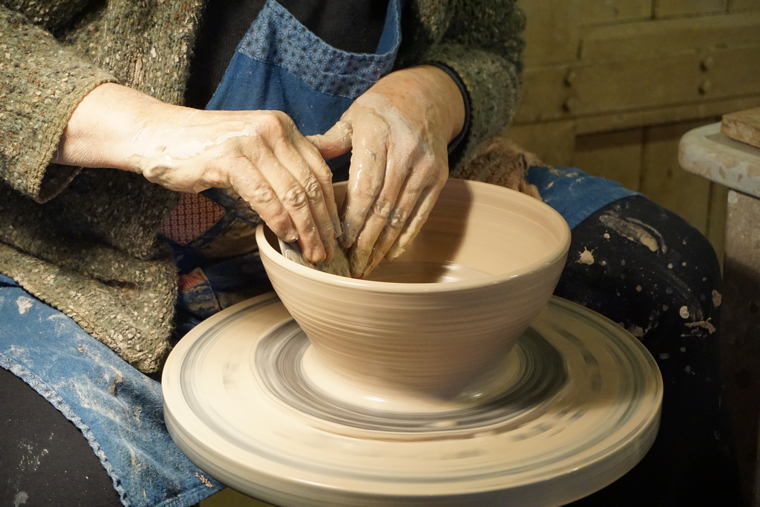
(photo credit: Magic Light Photography)
One of my favorite stories involves someone who came to buy shoes and ended up purchasing a downtown building to open an artist studio and gallery. Another couple simply stopped for breakfast and became intrigued by the historic downtown. When they heard that very few buildings remained vacant, they purchased a wreck of a building that same day. It was an old machine shop that was being used for storage. There was a motor on the roof, a glass block front, an asphalt parking area, and a garage door that faced the street. Most people would have passed it up, but not Judy and Sandy. When they saw the huge expanse of the basement with beautiful stone walls, it seemed as if a loud voice was announcing possibilities.
After they had transformed this building into the beautiful Longbranch Gallery, another opportunity presented itself. Judy and Sandy, who were hooked on rustic arts, had been successful in bringing Woodlanders, a group of nature-themed artists, to hold a gathering at Shake Rag Alley. Shake Rag got its name from the story of miners’ wives who, it is said, would shake a rag to call the men in from the mine. It may have a funny name, but this picturesque early settlement area has tons of charm and a magical feel about it. Its long, rich history includes a variety of uses, including as a 1980s tourist destination with working artists. The organizers and participants of the Woodlanders gathering fell in love with Mineral Point and with this particular space. It was an ideal location for building willow furniture, dying fabric with natural plant materials, and holding a host of other nature-based workshops.
Fast-forward a couple years: the property was on the market, nationally advertised for its historic value, and the sale about to take place would turn it into a private estate. Upon hearing this, there was a palpable groan from the Woodlanders, who did not want to lose this place. At the same time, Judy and Sandy had been in discussion with others about how Mineral Point should have an art school. While Shake Rag was not originally in their plans, that was about to change. They heard about the sale on the very day it was to happen. Reminiscent of the way they had a bought a building in a single day a few years earlier, they jumped into action and came to an agreement with the owner—with the understanding that it would be a nonprofit arts center. They were given three months to raise $100,000 for the down payment.
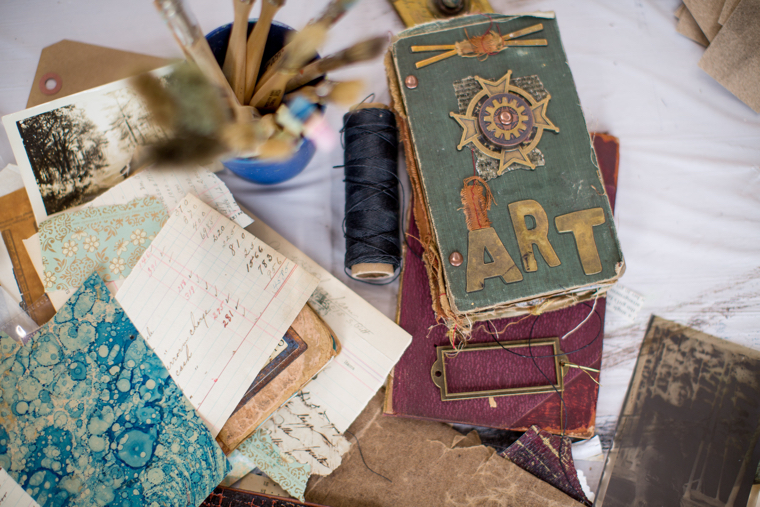
(photo credit: SV Heart Photography)
Only six weeks later, with the help of many people, they had accomplished it! Woodlanders guests and Mineral Pointers with strong connections to this site all came together to write checks and offer support, including a teenage boy from Iowa. Mike Christensen was a Woodlanders scholarship student who had no money but offered to do whatever he could to help. Today, thirteen years later, he is the president of the Shake Rag board of directors and a proud Mineral Point homeowner. And Shake Rag Alley Center for the Arts is a year-round destination where people from across the nation come to take classes in a wide range of arts and crafts, from paper making to blacksmithing and lots in between. For us, it is proof that Edgar Hellum was right: dreams can come true if “you want to do it badly enough.”
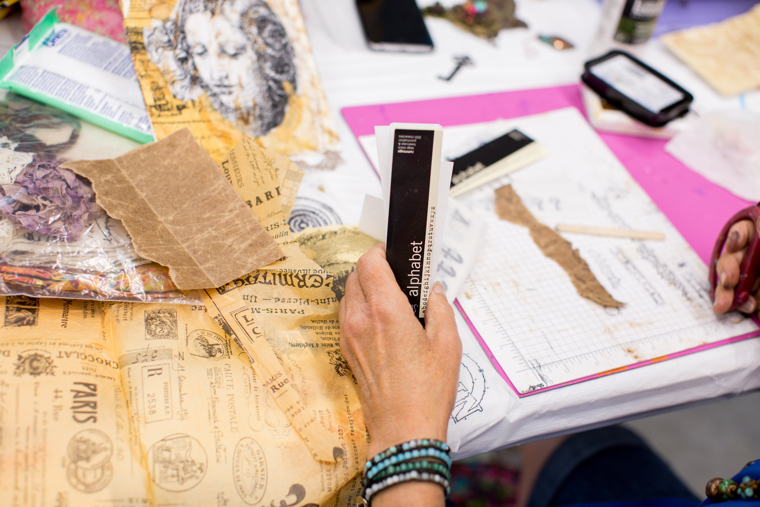
(photo credit: SV Heart Photography)
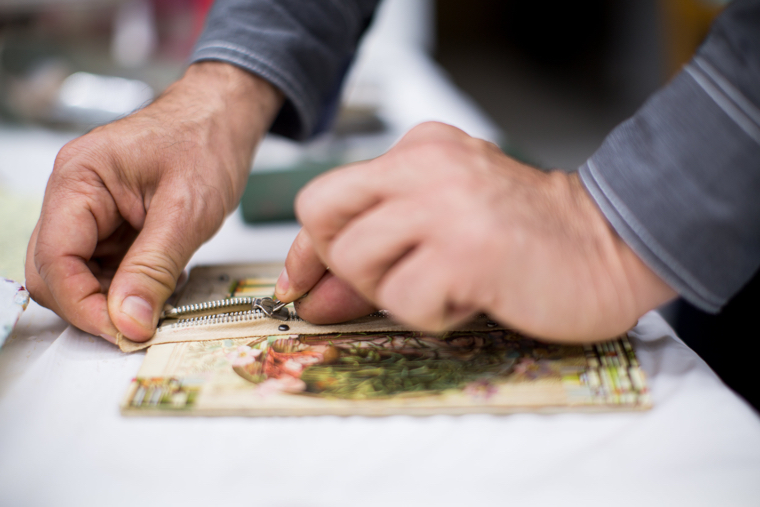
(photo credit: SV Heart Photography)
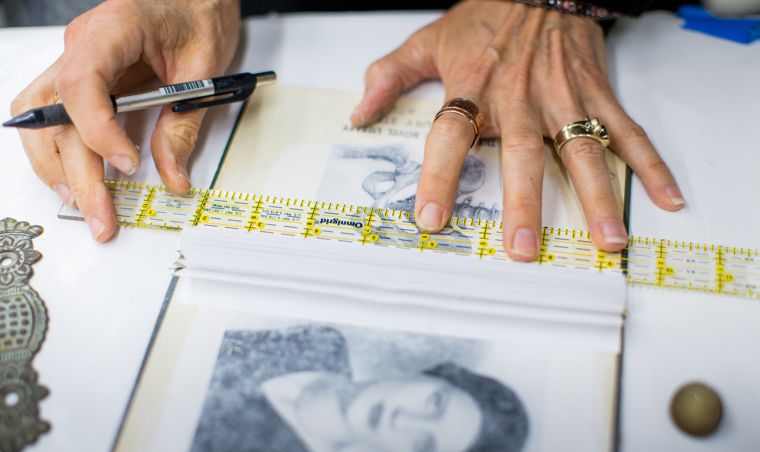
(photo credit: SV Heart Photography)
Others of us have come to discover Mineral Point not as artists but as people for whom art feeds our soul. There is plenty of that kind of nourishment, the only danger being that we might take it for granted. There are makers of all kinds here, artisans of the hand and of the land—potters and painters, weavers and woodworkers, print makers and pizza makers, glass artists and jewelry makers, sculptors and music makers, photographers and farmers and award winning cheese makers. Alongside all this there is a five-generations-old hardware store, the oldest pharmacy in the state, a real Ben Franklin store, and many more non-chain shops that support a vibrant downtown. We have more physicians per capita than perhaps anywhere, a school system that attracts students from outside the district, and some of the friendliest people you could ever hope to meet. Along with many others, I can truthfully say I have landed in the nicest place on earth, here in this town.
This article was written by Joy Gieseke —
Executive Director of the Mineral Point Chamber of Commerce
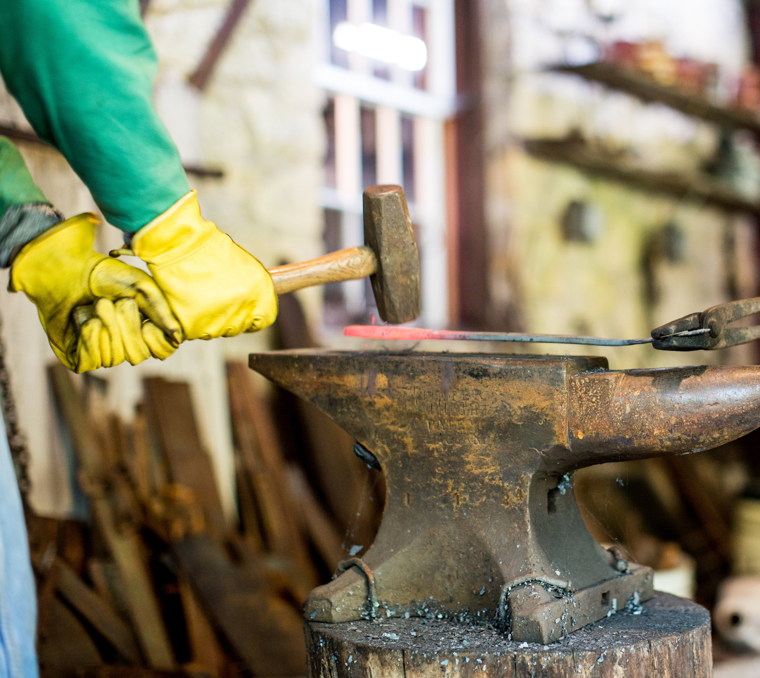
(photo credit: SV Heart Photography)
Quick Facts
Population: 2,487
Elevation: 1,109 feet
Avg Temp in January: 28/15
Avg Temp in July: 82/64
Known for: Historic Preservation, Cornish Architecture, Arts

